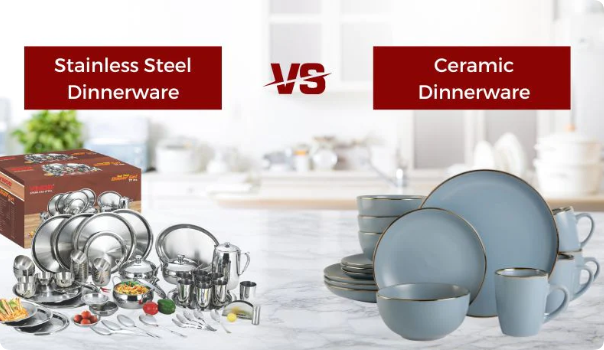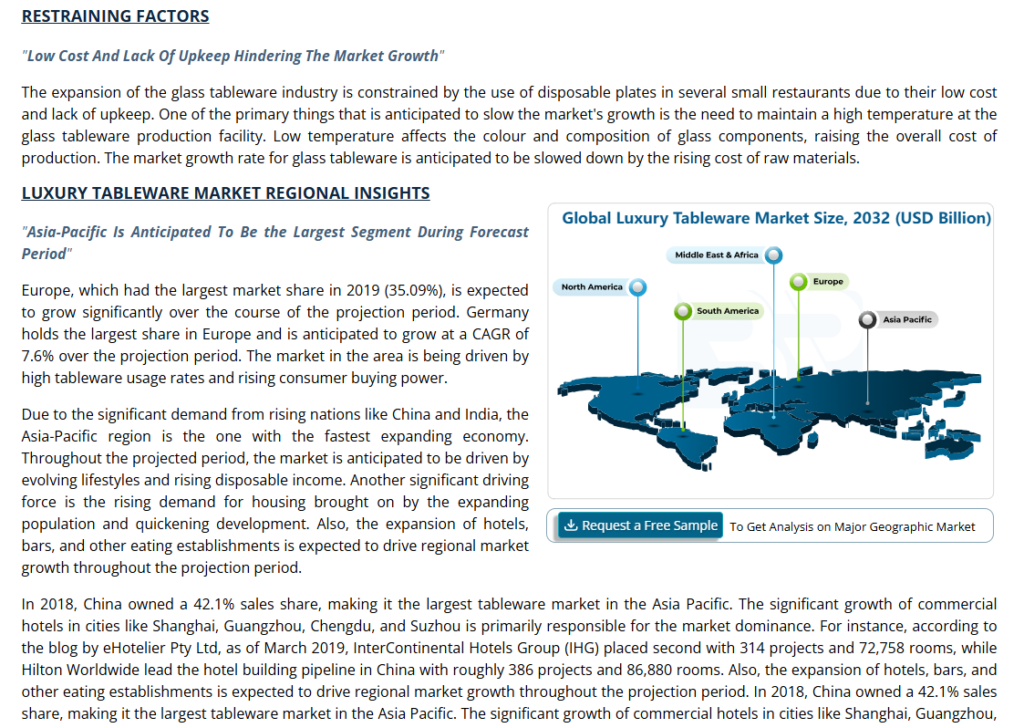A Comprehensive Guide for B2B Buyers
For B2B buyers, choosing the right dinnerware material impacts not only customer dining experience but also long-term maintenance costs and environmental responsibility. EKA Ceramic, a global leader in ceramic dinnerware, specializes in large ODM and small OEM custom orders, serving supermarkets, hotels, and other high-demand sectors. This article provides an in-depth comparison of stainless steel and ceramic dinnerware to help buyers make the best choice for their business needs.
1. Introduction to Stainless Steel and Ceramic Dinnerware

Stainless Steel Dinnerware
Stainless steel is known for its durability, corrosion resistance, and sleek, modern designs, making it ideal for high-usage settings like cafeterias and fast-food chains.
Ceramic Dinnerware
Ceramic dinnerware, crafted through high-temperature firing, offers a rich array of colors and designs. Its unique texture and aesthetic appeal make it well-suited to upscale dining and settings that seek a refined dining atmosphere.
2. Comprehensive Comparison of Stainless Steel and Ceramic Dinnerware
The table below summarizes the differences in durability, aesthetics, safety, maintenance, cost-effectiveness, and environmental impact of stainless steel and ceramic dinnerware, providing essential insights for B2B buyers.
| Attribute | Stainless Steel | Ceramic |
|---|---|---|
| Durability | Highly durable, break-resistant; ideal for high-traffic venues | Stable but breakable; better for controlled environments |
| Aesthetics | Sleek and modern, suits industrial or contemporary decor | Wide variety of colors and patterns, ideal for elegant settings |
| Health & Safety | Non-toxic, naturally antibacterial, odor-resistant | Lead-free and food-safe when of high quality; heat-resistant |
| Maintenance | Easy to clean, dishwasher-safe, color-fast | Easy to clean but fragile; recommended hand-washing for delicate pieces |
| Cost Efficiency | Higher upfront cost but durable; cost-effective long-term | Moderate initial cost, but higher replacement rate for breakage-prone environments |
| Environmental Impact | Recyclable and long-lasting, though energy-intensive to produce | Eco-friendly and non-toxic; harder to recycle, but naturally degradable |
3. Which Material Suits Your Business?
Stainless Steel
Best suited for high-traffic settings, such as cafeterias and fast-food outlets, where durability and low maintenance are prioritized. Its robustness makes it a cost-effective choice in the long term.
Ceramic
Ideal for high-end dining experiences, as it offers varied design options that enhance visual appeal. Ceramic is suitable for settings that prioritize aesthetics and a unique dining experience.
4. Market Trends for Stainless Steel and Ceramic Dinnerware
Global demand shows a growing interest in sustainable materials and low-carbon products in markets like North America and Europe. Ceramic demand has increased due to its natural appeal, while stainless steel remains favored in high-usage environments due to its resilience.

5. EKA Ceramic’s Customization Services
EKA Ceramic offers two main customization options:
- ODM Customization – Tailored for large orders, providing integrated solutions across design, production, and packaging for supermarkets, hotels, and restaurants.
- OEM Small-Batch Customization – Ideal for small-volume clients, such as cross-border e-commerce buyers, allowing brands to offer unique ceramic designs at a manageable scale.
6. EKA Ceramic’s Commitment to Quality and Technology
EKA Ceramic combines advanced manufacturing and stringent quality controls, ensuring each ceramic item meets the highest standards. EKA’s eco-friendly production processes align with international environmental and food safety standards, supporting clients in enhancing their brand image.
7. A Buyer’s Guide: Key Considerations in Material Selection
For B2B buyers, material choice depends on use case, brand aesthetics, and budget:
- High-use, high-durability venues (e.g., fast-food outlets, corporate cafeterias) will benefit more from stainless steel.
- High-end dining settings, such as upscale restaurants or hotels, will find ceramic aligns well with customer expectations for aesthetic appeal.
- Eco-conscious brands may prefer ceramic for its natural composition, while stainless steel may appeal for its recyclability.
8. Conclusion
Both stainless steel and ceramic dinnerware offer unique advantages, and the best choice depends on the business environment and brand goals. EKA Ceramic provides premium ceramic options with both ODM and OEM services to meet the needs of global B2B clients. Visit www.ekaceramic.com or contact our support team for more information on our products and customization services.

